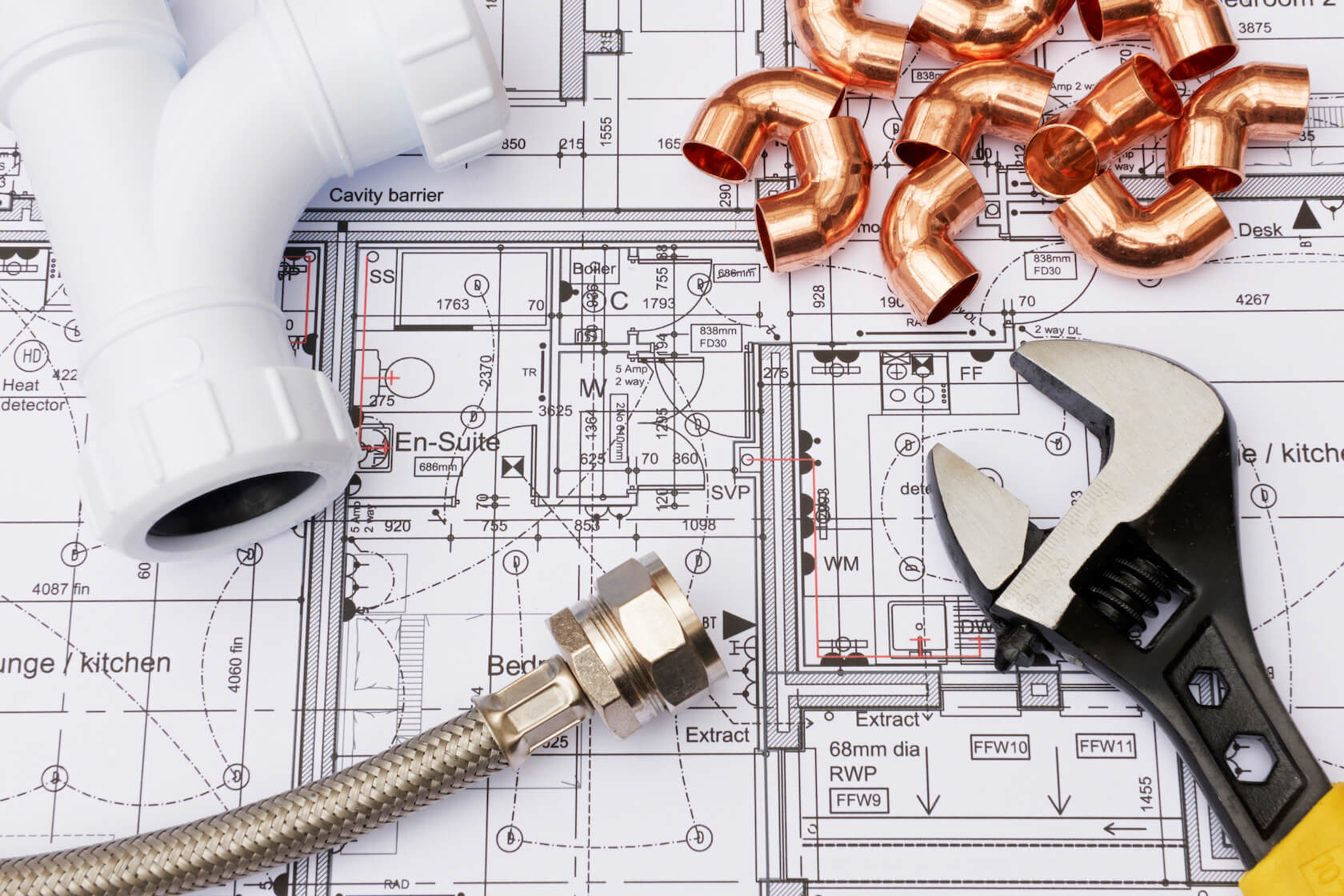This post which follows on the subject of The Inner Workings of Your Home's Plumbing is highly informative. You should give it a look.

Recognizing how your home's plumbing system works is vital for every home owner. From delivering clean water for drinking, cooking, and bathing to safely eliminating wastewater, a properly maintained plumbing system is vital for your family members's wellness and convenience. In this detailed overview, we'll discover the detailed network that makes up your home's plumbing and deal ideas on upkeep, upgrades, and handling usual concerns.
Introduction
Your home's plumbing system is greater than simply a network of pipes; it's a complex system that ensures you have accessibility to tidy water and efficient wastewater removal. Recognizing its elements and how they interact can help you prevent expensive repair work and make sure everything runs smoothly.
Basic Elements of a Plumbing System
Pipes and Tubes
At the heart of your plumbing system are the pipes and tubes that lug water throughout your home. These can be made from various products such as copper, PVC, or PEX, each with its benefits in regards to sturdiness and cost-effectiveness.
Fixtures: Sinks, Toilets, Showers, and so on.
Fixtures like sinks, commodes, showers, and tubs are where water is used in your home. Recognizing exactly how these fixtures attach to the plumbing system aids in identifying problems and intending upgrades.
Valves and Shut-off Factors
Valves regulate the flow of water in your pipes system. Shut-off valves are vital during emergency situations or when you need to make fixings, enabling you to isolate parts of the system without interrupting water flow to the whole house.
Water System System
Key Water Line
The main water line attaches your home to the community water or an exclusive well. It's where water enters your home and is distributed to numerous fixtures.
Water Meter and Stress Regulator
The water meter procedures your water use, while a pressure regulatory authority makes certain that water flows at a secure pressure throughout your home's plumbing system, protecting against damage to pipelines and fixtures.
Cold Water vs. Hot Water Lines
Recognizing the distinction in between cold water lines, which provide water directly from the primary, and warm water lines, which carry warmed water from the water heater, assists in repairing and planning for upgrades.
Drain System
Drain Pipes Pipes and Traps
Drain pipes lug wastewater away from sinks, showers, and toilets to the sewer or sewage-disposal tank. Catches protect against sewer gases from entering your home and likewise catch debris that might trigger obstructions.
Ventilation Pipes
Air flow pipelines allow air into the drain system, protecting against suction that could slow down drain and create traps to empty. Appropriate air flow is crucial for maintaining the stability of your pipes system.
Relevance of Proper Drainage
Guaranteeing proper drain stops back-ups and water damages. Routinely cleaning drains and maintaining traps can stop expensive repair work and prolong the life of your pipes system.
Water Furnace
Sorts Of Hot Water Heater
Water heaters can be tankless or traditional tank-style. Tankless heating systems warmth water as needed, while containers store heated water for immediate use.
How Water Heaters Connect to the Plumbing System
Understanding how water heaters connect to both the cold water supply and hot water distribution lines helps in identifying problems like inadequate hot water or leaks.
Maintenance Tips for Water Heaters
Routinely flushing your water heater to remove sediment, checking the temperature setups, and evaluating for leakages can expand its life-span and enhance energy effectiveness.
Common Plumbing Issues
Leakages and Their Reasons
Leakages can happen because of aging pipelines, loosened installations, or high water pressure. Dealing with leakages immediately stops water damage and mold growth.
Obstructions and Clogs
Blockages in drains and toilets are often brought on by flushing non-flushable items or a buildup of grease and hair. Using drainpipe displays and being mindful of what goes down your drains can protect against blockages.
Indications of Plumbing Troubles to Look For
Low tide pressure, slow-moving drains, foul odors, or abnormally high water expenses are signs of prospective plumbing issues that should be attended to promptly.
Pipes Maintenance Tips
Routine Inspections and Checks
Schedule yearly plumbing assessments to catch problems early. Look for indications of leakages, corrosion, or mineral build-up in faucets and showerheads.
Do It Yourself Upkeep Tasks
Easy jobs like cleaning tap aerators, looking for toilet leakages using dye tablet computers, or insulating revealed pipes in cool climates can prevent significant plumbing problems.
When to Call a Professional Plumbing Professional
Know when a plumbing concern needs specialist competence. Attempting complicated repairs without appropriate knowledge can cause more damage and greater repair work expenses.
Upgrading Your Pipes System
Reasons for Upgrading
Upgrading to water-efficient fixtures or replacing old pipes can enhance water high quality, minimize water costs, and raise the worth of your home.
Modern Pipes Technologies and Their Advantages
Discover modern technologies like clever leakage detectors, water-saving commodes, and energy-efficient hot water heater that can conserve cash and lower ecological influence.
Price Factors To Consider and ROI
Determine the in advance expenses versus long-lasting cost savings when thinking about plumbing upgrades. Many upgrades spend for themselves via lowered energy expenses and less repair work.
Environmental Impact and Conservation
Water-Saving Components and Devices
Mounting low-flow taps, showerheads, and bathrooms can considerably reduce water use without giving up efficiency.
Tips for Decreasing Water Use
Straightforward routines like taking care of leaks quickly, taking much shorter showers, and running complete tons of laundry and recipes can preserve water and lower your utility expenses.
Eco-Friendly Pipes Options
Think about sustainable plumbing materials like bamboo for flooring, which is durable and green, or recycled glass for counter tops.
Emergency Preparedness
Steps to Take Throughout a Pipes Emergency situation
Know where your shut-off shutoffs are located and exactly how to turn off the water in case of a ruptured pipeline or major leak.
Importance of Having Emergency Calls Helpful
Keep call information for neighborhood plumbing professionals or emergency situation solutions readily available for fast action throughout a plumbing crisis.
Do It Yourself Emergency Situation Fixes (When Appropriate).
Short-term fixes like making use of air duct tape to patch a leaking pipeline or putting a bucket under a dripping tap can lessen damage until a specialist plumbing technician arrives.
Conclusion.
Recognizing the composition of your home's plumbing system encourages you to preserve it effectively, conserving money and time on repair work. By adhering to routine maintenance regimens and staying informed concerning contemporary pipes innovations, you can ensure your pipes system operates efficiently for several years to find.
HOW YOUR PLUMBING SYSTEM WORKS
Which Pipes Do What?
Blue lines = fresh water supply entering the building Red lines = hot water supply entering the building Grey lines = pipes carrying waste away from the building and venting pipes carrying gases away from the building (through the roof) YOUR MAIN PLUMBING SYSTEMS
There are two main plumbing systems that support your home s basic plumbing needs one that brings clean water into your home, and one that sends dirty water away from your home. Connected to the toilet, bath, shower, and other faucets in your home, these two systems keep your water flowing in the right directions.
ACCESSING FRESH WATER
Fresh and clean water is brought into your home through the main water supply line . Filtered through one pipe, this water is pressured to flow into the various fixtures in your home at any given time.
This water can be sourced from a well located on your property, a pond or river (mostly cottages), or, as in most cases, from the city s municipal water treatment centre. However, it is important to note that water that is untreated, such as the water siphoned from ponds or rivers, may not be safe to drink. Personal water supplies always need to be treated for hardness and contaminants before consumed.
MUNICIPAL WATER SUPPLIES
Improve taste and odour Remove sediment Eliminate hardness Reduce chlorine COLD WATER SUPPLY VS. HOT WATER SUPPLY
Cold water flows into your home or building through the service line, which then distributes hot or cold water to your fixtures. This line is most commonly run through a central column that runs floor to floor. Hot water runs in short and straight pipes as the longer the pipeline, the more heat that will be lost in the transfer. Having shorter pipes also allows residents to access hot water more quickly.
WASTE WATER SYSTEM
Your wastewater system is divided into two parts pipes that send wastewater away from your home and venting pipes that send sewer gas away from your home. Sewage water travels through pipes that flush the water and waste towards local sewers that are operated and managed by your city or town. Most sewer systems rely on gravity to move the wastewater to where it needs to go.
The further away from your toilet or sink, the larger wastewater pipes become. This allows for waste to be disposed of from various parts of your home or business at once without pipe blockages. The angle and flow of these pipes are also essential for keeping your waste pipes clear of build up.
https://harrisplumbing.ca/how-your-home-plumbing-system-works/

Hopefully you enjoyed reading our excerpt on Exploring Your Homes Plumbing Anatomy. Thank you so much for spending some time to browse our blog. For those who enjoyed our article plz do not forget to share it. Thank-you for your time invested reading it.
Article
 Mara Wilson Then & Now!
Mara Wilson Then & Now! Alana "Honey Boo Boo" Thompson Then & Now!
Alana "Honey Boo Boo" Thompson Then & Now! Joseph Mazzello Then & Now!
Joseph Mazzello Then & Now! Michelle Pfeiffer Then & Now!
Michelle Pfeiffer Then & Now! Michael Jordan Then & Now!
Michael Jordan Then & Now!